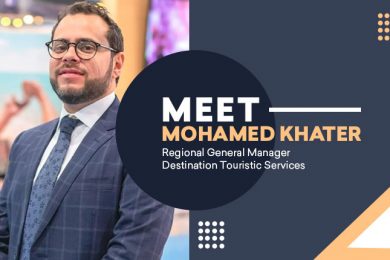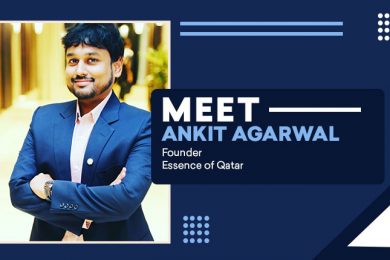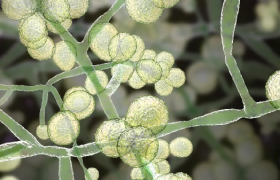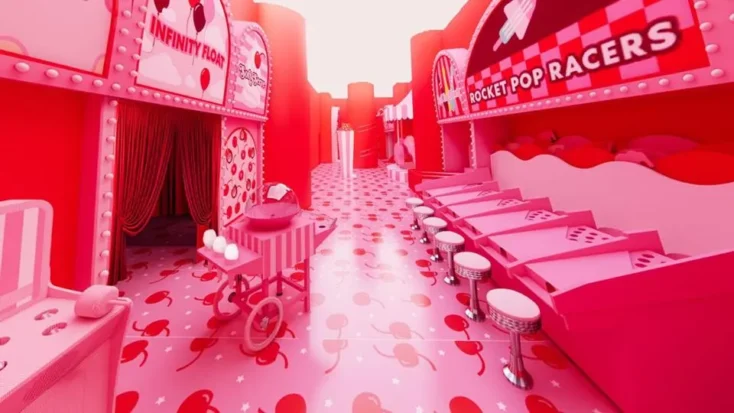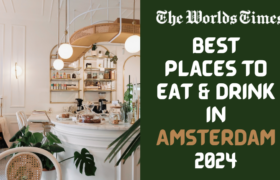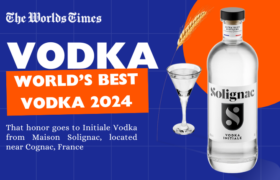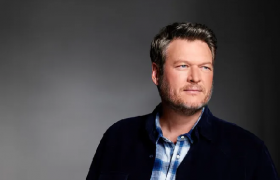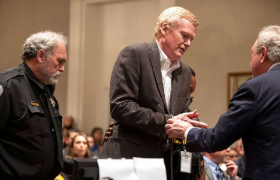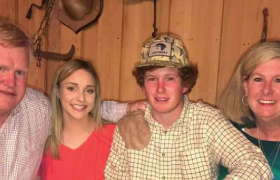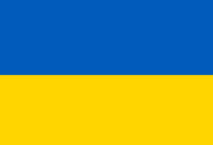Date: September 2024, 24th
Julie Babigeon is a distinguished architect and urban planner with a multifaceted career blending architectural design, urbanism, and landscape architecture. Graduating from ENSA Paris-Malaquais, she holds advanced qualifications in both architecture and landscape design. Her expertise spans applied research and practice in areas like urban planning, transportation systems, and environmental design. Julie has contributed to major projects in Paris and Greater Île-de-France, advocating for sustainable infrastructure and preservation of green spaces. Her diverse experience includes work with prominent architectural firms and collaborations with academic and professional publications. Through her innovative designs and research, she continues to influence the future of urban development.
Professional Background
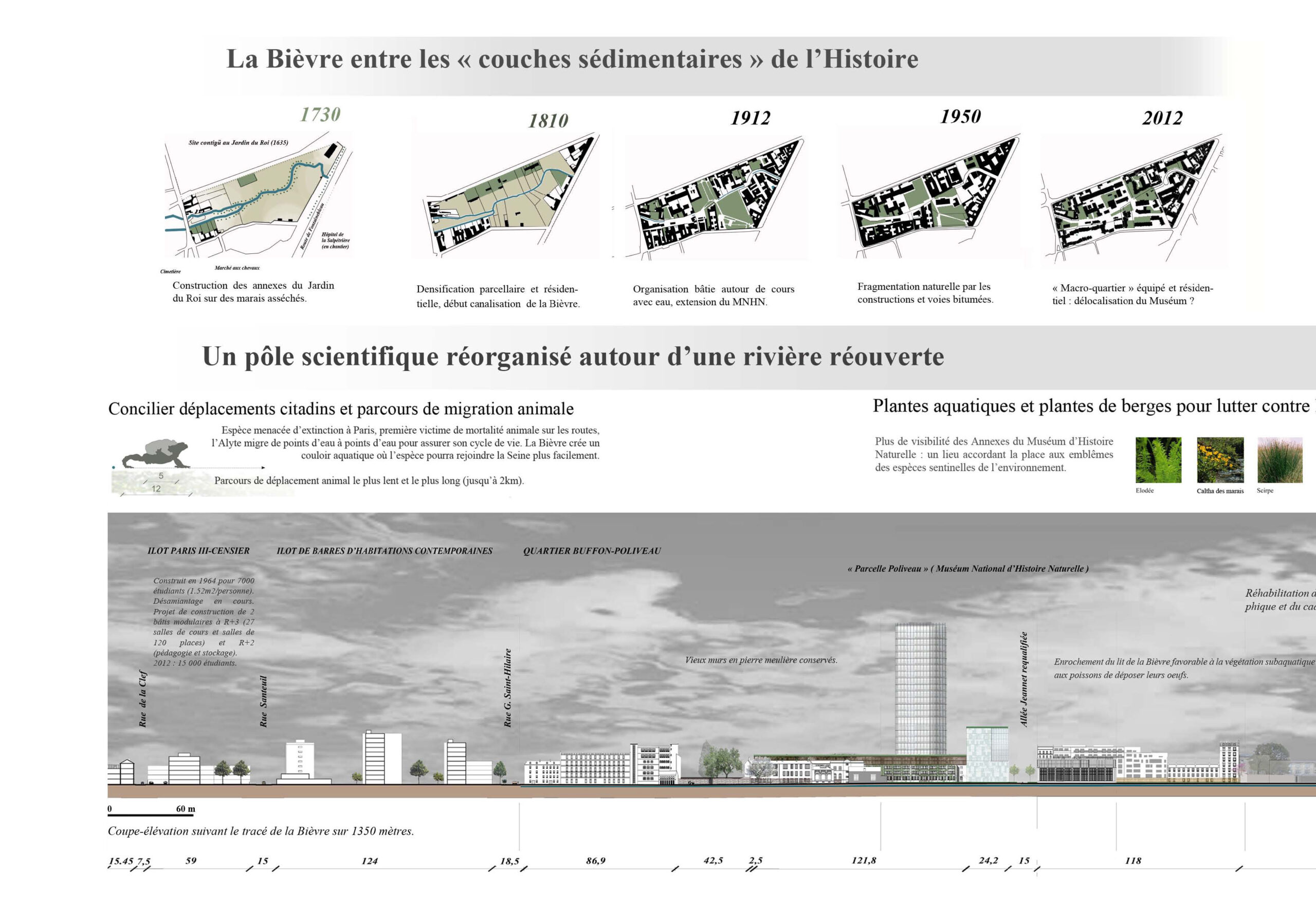
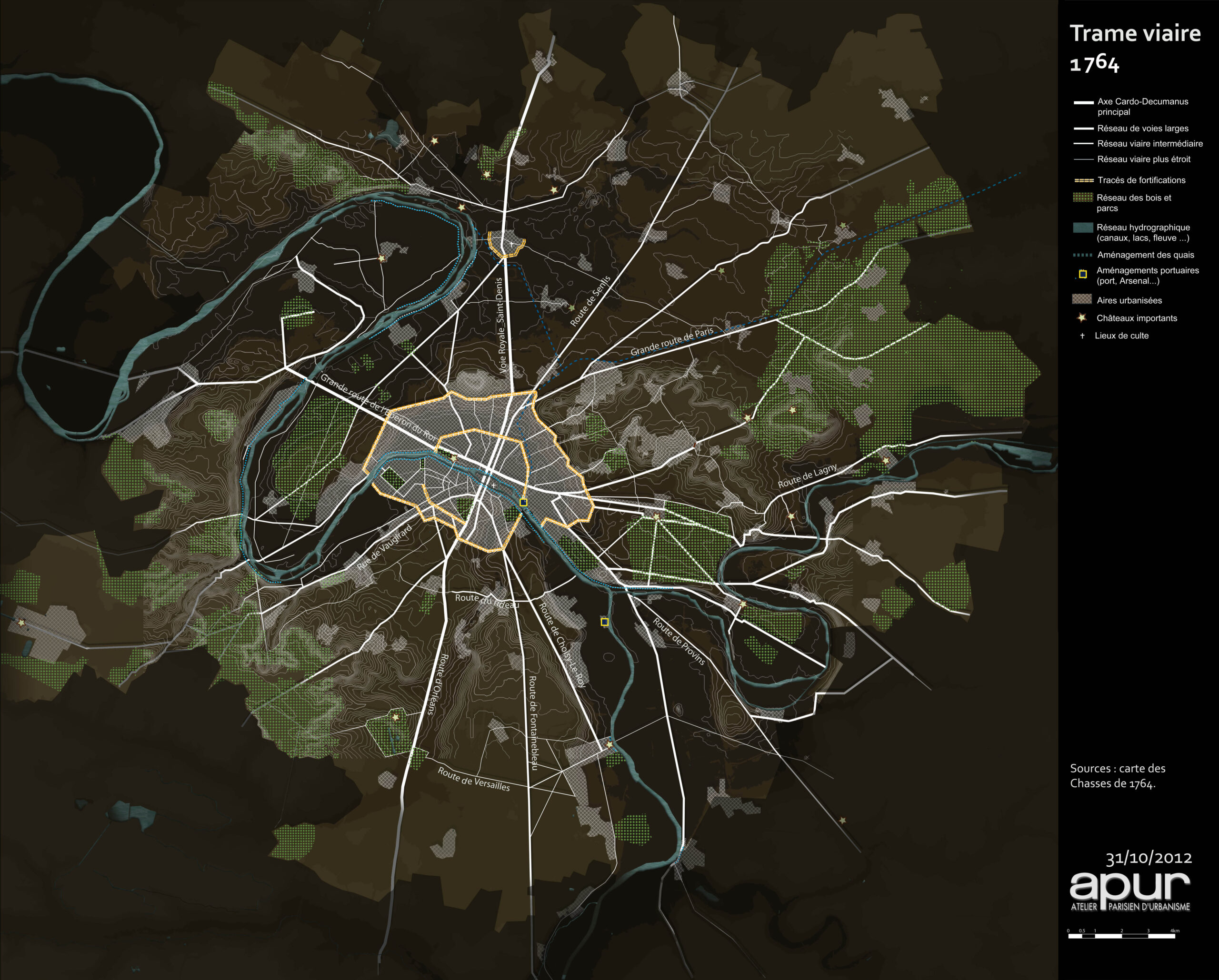
We started the interview by asking, “Explain your background and your firms in detail.”
Julie Babigeon replied, “A State architect (architect DE-HMONP) graduated from ENSA Paris-Malaquais and holding a BTS’ diploma in landscape design from the Natura-Dis’ School. After obtaining a Literary Baccalaureate, I pursued nine years of higher education including four diplomas with honors or mentions. My publications’ works began at ENSAPM, where I contributed to the books of my teachers Thierry MANDOUL, Jean ATTALI and Bruno-Jean HUBERT. Subsequently, my experiences at the INNOVAPRESSE agency (Traits Urbains’ magazine), for which I initiated the participatory’ website www.urbapress.fr, and then, my pre-doctoral training AT ENSAPBX’ school, allowed me to develop my skills in applied research in the fields of planning, urbanism, architecture, decoration, landscape and environment.
I worked in several Parisian architectural firms such as Catherine FURET, Jérôme TREUTTEL (TGTFP), AMELLER & DUBOIS, as well as at the Atelier Parisien d’Urbanisme (APUR) where I completed my qualification as an architect on the topic of the roads’ network and transportation system in the Greater Paris area. During I was working at the Atelier Parisien d’Urbanisme (2012 October 2012-Februray 2013), the team allowed me to address significant issues, such as those related to the transportation infrastructure of Greater Paris, an ambitious project aimed at improving Île-de-France’ regional connectivity. I proposed to the team that there should be a thorough reflection or debate on the locations of the transportation network’s stations, particularly in order to avoid impacting the last vital agricultural lands and some green spaces or parks.
In the context of my HMONP diploma’ mission, I participated in creating reference cartographies for the study of the roads’ network of Greater Paris. My analytical maps illustrate the historical urban evolutions of the center of the Parisian agglomeration. I conducted an analysis of the transportation system’ offer in this region and their historical development. Finally, I also contributed to analytical maps of public spaces located around the stations of the Grand Paris Express’ network (RGPE), which ultimately led to the production of an atlas of maps in 2013-2014.
I indirectly participated in the restructuring of the administrative organization of APUR’ agency into new different directions, an initiative I proposed to the Mayor of Paris Anne HIDALGO during the context of my final diploma. I also suggested initiating a debate on the creation of pedestrian space’ zones, Zones 20 and Zones 30 in several districts of Paris to enhance safety and promote a better quality of life and air.
As another part of my architect’ qualification, I also proposed an initiative for a “Local Urban Plan” (PLUi) in Dordogne for the benefit of the Community of Communes of Périgord Noir (CCSPN). I began to think about the interdependent relationships between the capital of Paris, major other cities and the preserved rural territories I became familiar with during my childhood. I suggested to APUR to focus on a new kind of partnerships, such as those exchanges with other French rural areas or natural and preserved zones, in order to develop synergies and a better territorial cohesion in France.
This reflection finally led to the production of a book entitled “the paradisiacal urban design” and prefaced by Germinal PEIRO, president of the Dordogne’ Department. This theory is based on the example of an ecovillage’ project located in Saint-Vincent-de-Cosse, in Dordogne. These kind of villages can offer some examples of an even more significant interdependent vision between rural areas and major metropolis in France. This book encourages urban planners and architects to draw inspiration from preserved sites and territories to design urban zones and to more effectively respect the environmental impact studies (EIE) produced by legal experts or environmental specialists. Indeed, current practices nowdays often overlook the consideration of the valued data’s contained in these documents.
Subsequently, I then collaborated as an architect and 3D model maker at BASE French landscape design’ agency, where I produced references of 3D models for some Public Collectivities in Bordeaux. I proposed to include landscape architecture in the city’s biennial architecture event in Bordeaux. I was then recruited as a Human Resources Project Manager for the humanitarian organization Grain d’Espoir Sénégal, from 2020 to 2021. I was responsible for developing the Association’s network of influence (growing from 10 to more than 250 members) and managing a graphic communication competition in order to redesign the Association’s logo and communication supports. I also proposed the establishment of an organizational chart with different departments, which inspired those of many other groups on LinkedIn.
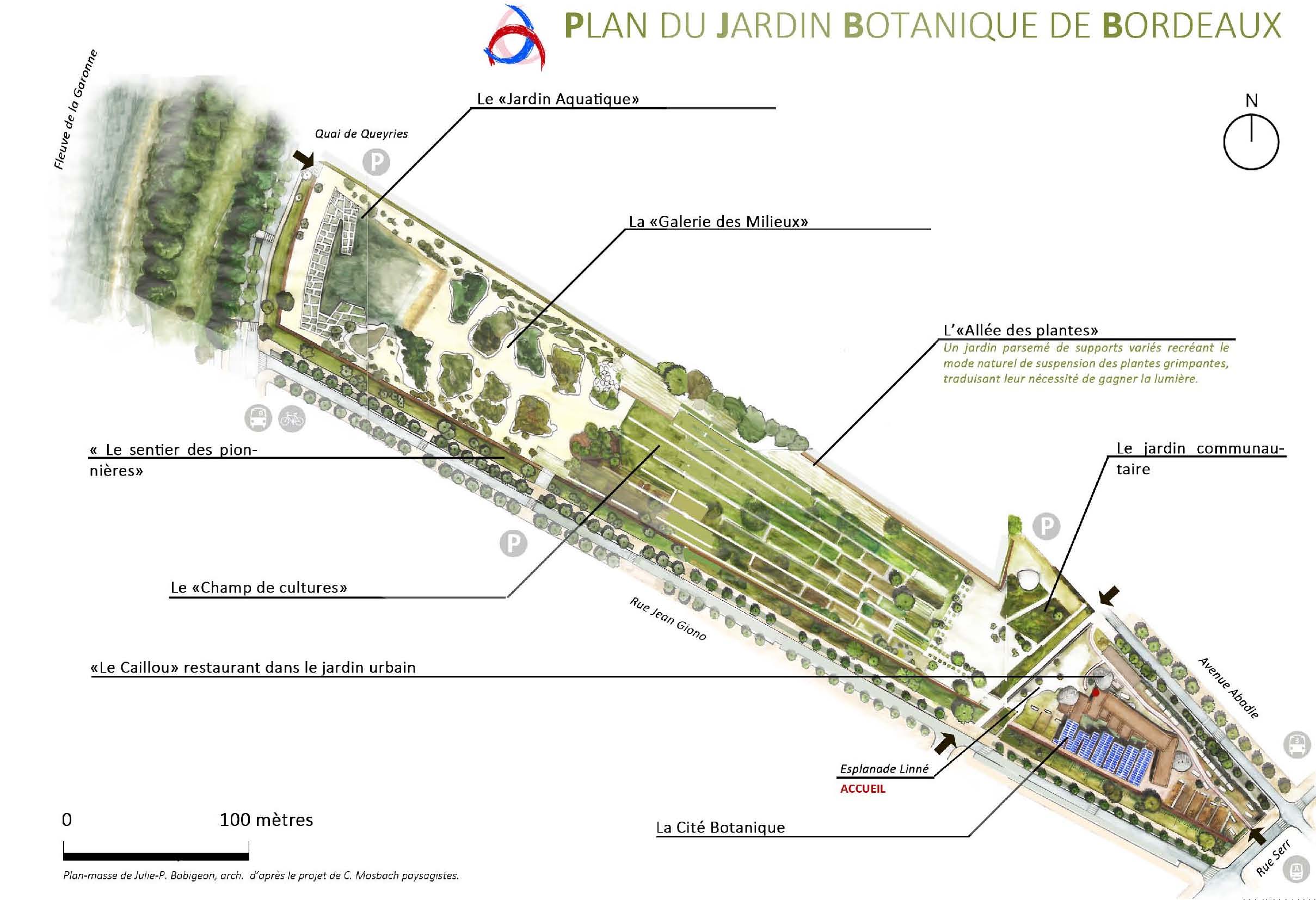
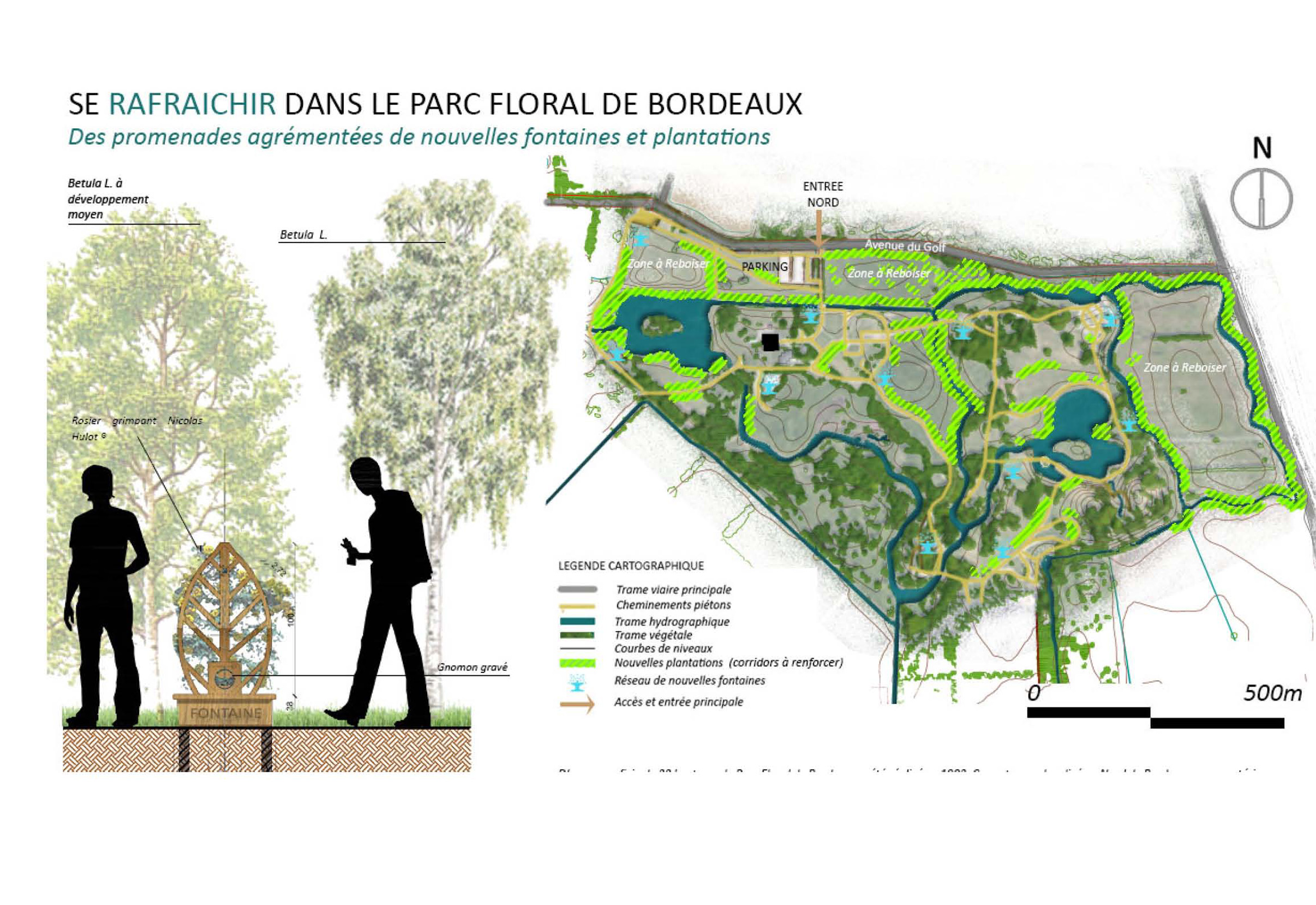
Since 2021, I dedicate myself to specialized research or written studies in the field of urban planning, landscape design and architecture. Following my experiences with African associations, I wrote my first book entitled “African Dream: Portraits of Talented African Women” (2021-23) which was prefaced by the Government French Minister Elisabeth MORENO.
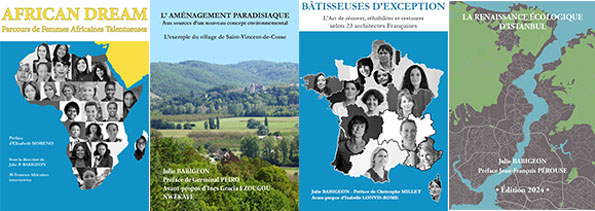
This year in 2024, I produced my first book on the subject of the history of architecture, a study of more than 350 pages entitled “Exceptional French Builders” which referenced talented architects coming from all the French regions and that book was prefaced by the French Minister Isabelle LONVIS-ROME. I am currently finalizing my fourth book’ project dedicated to the topic of “The Ecological Renaissance of Istanbul” which follows the research I conducted during my master’s studies in urban planning and architecture.
Finally, I decided to found a FabLab entitled “Divine Nature” on 2024, June 13th, which serves as both as a fabrication’ space and as a research laboratory focused on ecological planning. The slogan of the FabLab is: “Creating Built Environments for Everyone and that Respect Life”. Having inspired the local FabLab of the City of Sarlat in Dordogne, my project is structured around seven thematic “poles” or departments dedicated to all phases of the works of the eco-architects:
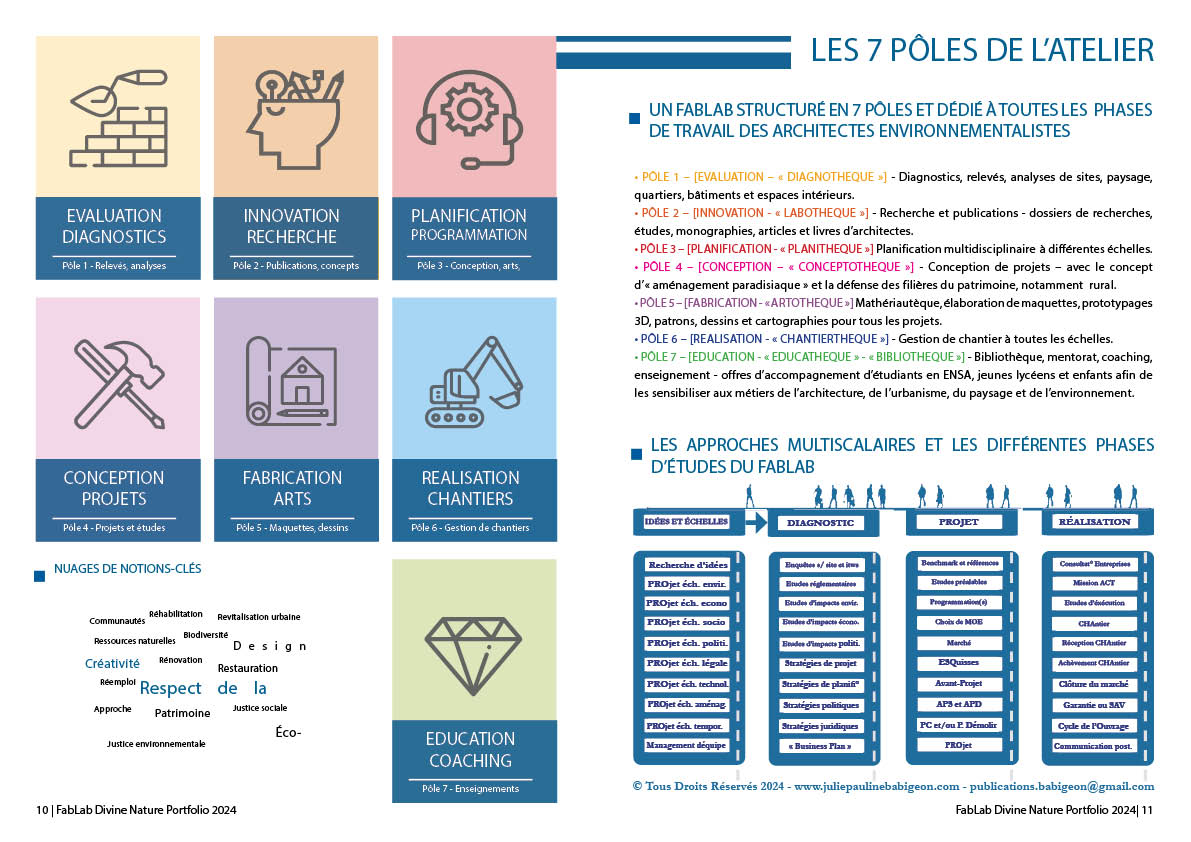
- Department / Pole 1: “Evaluation” (diagnostics, surveys, 3D and 2D measures, and multiscale analysis) ;
- Department / Pole 2: “Innovation-Research”;
- Department / Pole 3: “Planning”;
- Department / Pole 4: “Design-Projects” ;
- Department / Pole 5: “Fabrication” (3D and 2D models, photographs, drawings, maps or cartographie s, watercolors…) ;
- Department / Pole 6: “Implementation” (project management and construction site’ management) ;
- Department / Pole 7: “Education” (mentoring, teaching, workshops …).
Focused on the symbol of the bees and on the design of projects that truly respect the environment and enhance heritage, the expertise of the FabLab “Divine Nature” extends from 3D model’ fabrication to drawing and specialized publications. The FabLab celebrates the bee as sentinel species for environmental protection, emphasizing the importance of preserving Nature in urban planning projects. This small creature with delicate wings embodies the strength of environmental preservation. Its diligent and methodical work serves as a reminder that perseverance and effort are essential to achieving our goals. The aim is to convey a strong message of commitment to environmental preservation and the future of Humanity, especially towards the young generations. The target markets encompass all phases of planning projects (diagnosis, analysis, surveys, 3D models, design and implementation phases) as well as the creative arts in general (logos, graphic charters, watercolors, paintings, sculptures, photography…).
The FabLab possesses a strong environmental integrity as it prioritizes specialized research and renovation projects. The agency constantly seeks solutions that minimize impacts on natural, agricultural, and/or forested environments. Accounting for approximately 24% of the national carbon footprint, the construction sector has a significant impact (ranking as the most polluting sector with agriculture, health, and transportation). We estimate that “the equivalent of a French department is urbanized every five years, meaning that 8 to 9% of arable lands will disappear by 2060, and one-fifth of agricultural potential will be lost between 1960 and that date if no action is taken”. This will continue to be the case if we persist in glorifying new construction’ sector and urban sprawl’ approach.
FIRST PROJECTS OR REFERENCES
→ Territorial and urban planning. My approach of territorial and urban design projects is based on the influence of Italian typo-morphology (studies realized by Saviero MURATORI and Carlo AYMONINO) which inspired the School of Versailles (Philippe PANERAI, Jean CASTEX, and David MANGIN) and the School of Paris (Jérôme TREUTTEL, study named “From Free Space to Public Space”). My conception is characterized by a project strategy based on “strates” (topographical, roads and ways, built, hydrographic, vegetative, climatic layer, etc) as well as an interpretation of the “Environmental Approach to Urbanism” (AEU 1 and 2).
- Final Project “PFE” / Projet de Fin d’Etudes (State architect’ diploma, ENSAPM studies) : “Bringing back Nature into the Buffon-Poliveau District in Paris”
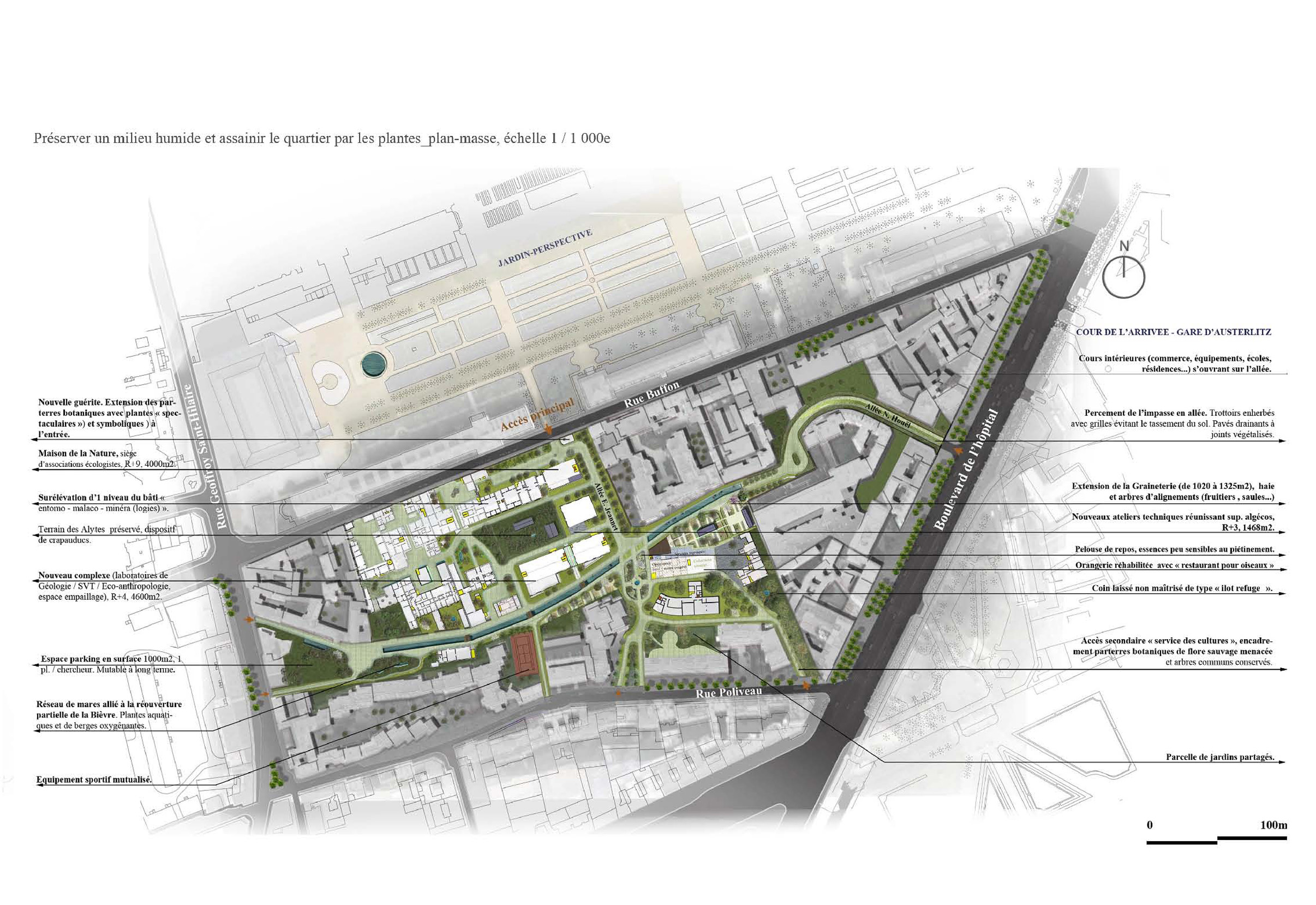
The following State architect’ diploma (PFE) focuses on an alternative planning of the Buffon-Poliveau’ district (Paris 5e). Confronted to increasing density among the core of this discrict, this project aims to create innovative design, green public spaces while preserving and enhancing the existing nature (seed zones, remarkable trees and vegetation, wildlife protection zones …). This urban project also emphasizes the rehabilitation of existing buildings where researchers from the National Museum of Natural History (MNHN) are working.
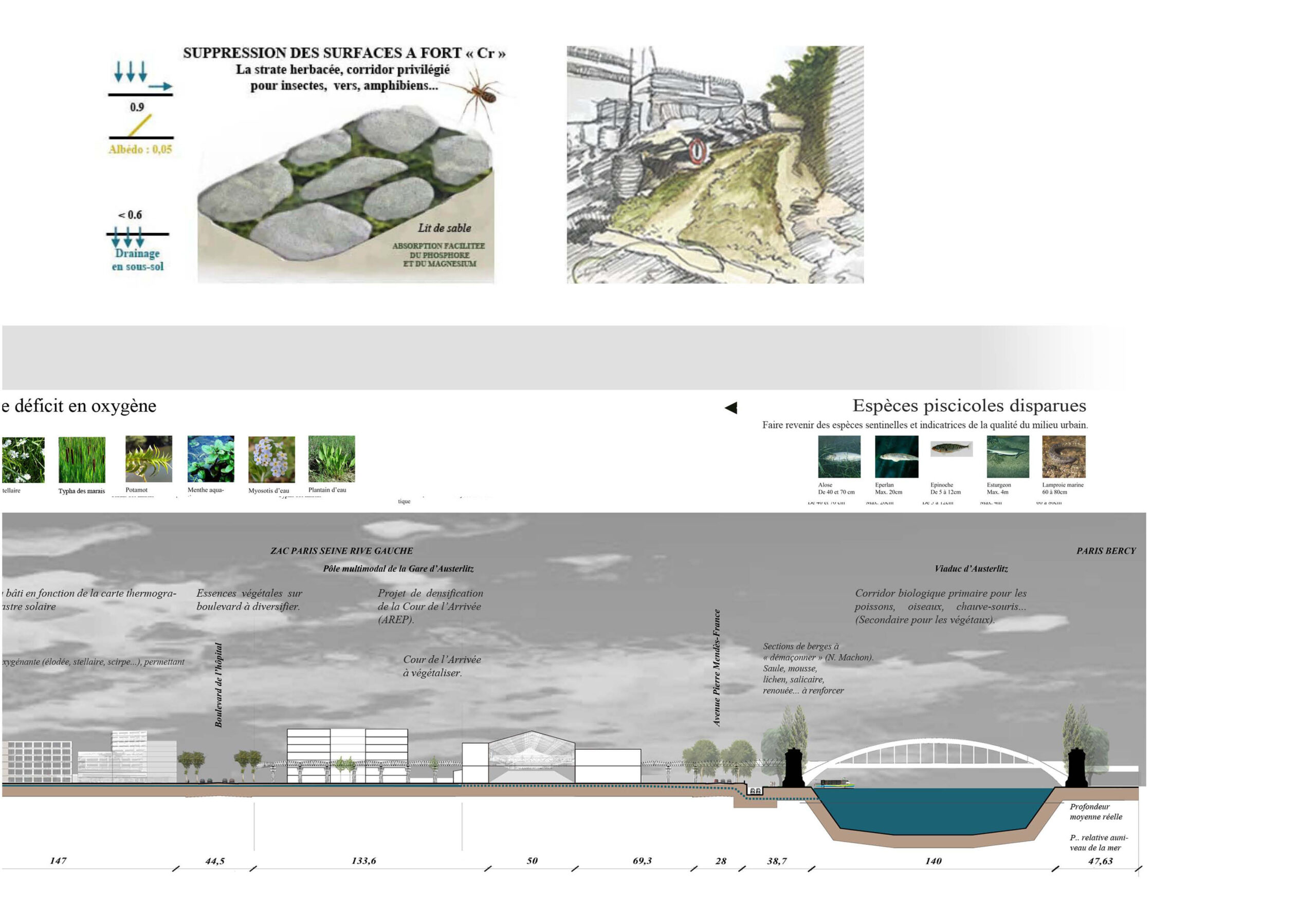
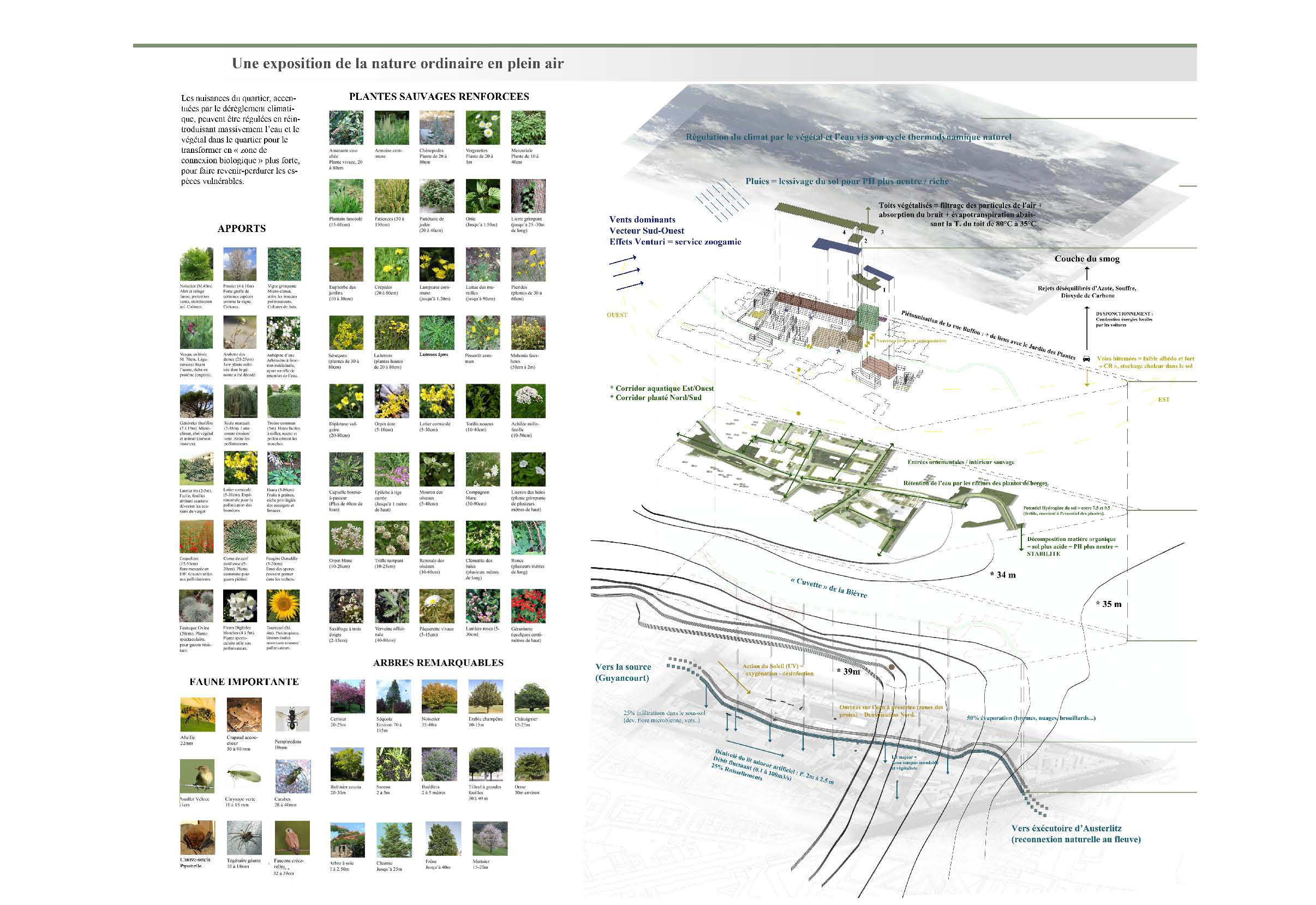
- International workshop’ Project in China (collaboration with China Academy of Arts) : “Developing the Satellite-City of Hangzhou”
The following urban planning’ project aims to build the satellite-city of Hangzhou while preserving its agricultural lands and water bodies.
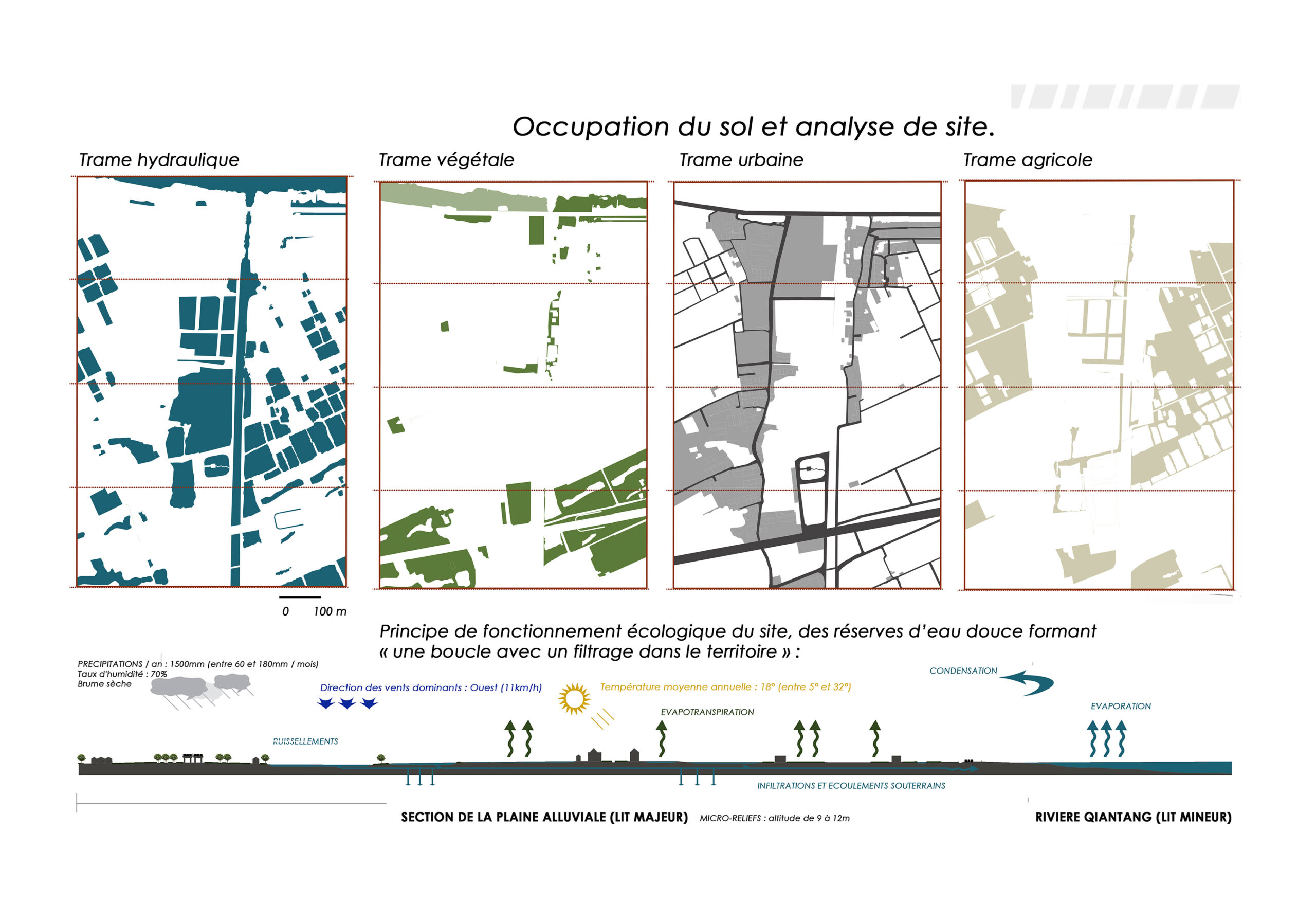
- Final HMONP diploma (ENSAPM studies) : “The Roads’ and transportation Network of the Greater Paris’ Area” (APUR)
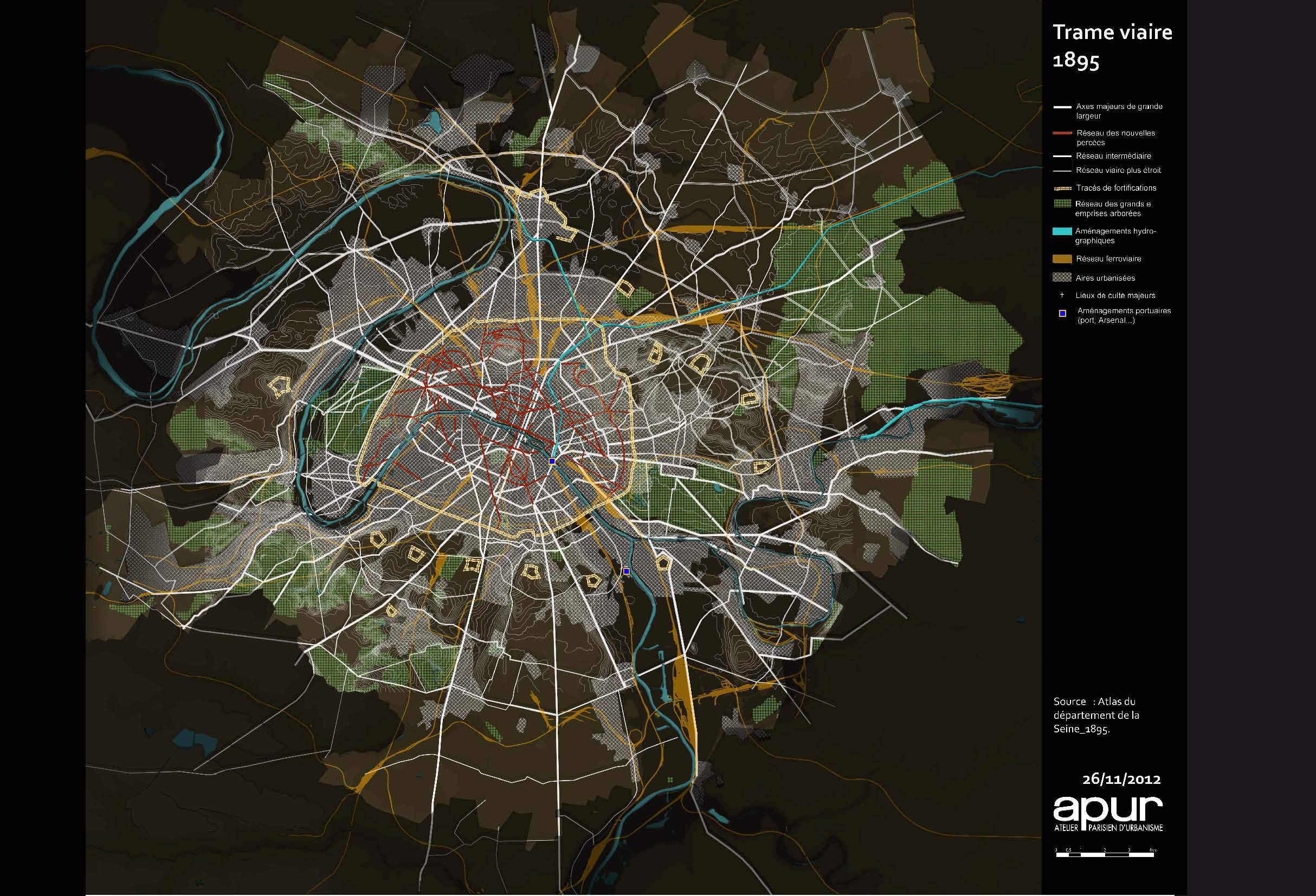
Creation of reference maps for the Grand Paris’ project at the Paris Urban Planning Agency.
- Bachelor’s Degree Project (ENSAPM studies): “Increasing Built Density in the Municipality of Pantin’ District”
This project represents a multifunctional program, including a gymnasium, collective housings, offices and a media library.
- Master 1’ project (ENSAPM studies) : “A Promenade in the Porte d’Aubervilliers” (93) which inspired the DE PORTZAMPARC’ agency in its design of the eco-city esplanade’ project in Grenoble in 2013. This study project aims to enhance the public spaces of the Porte d’Aubervilliers.
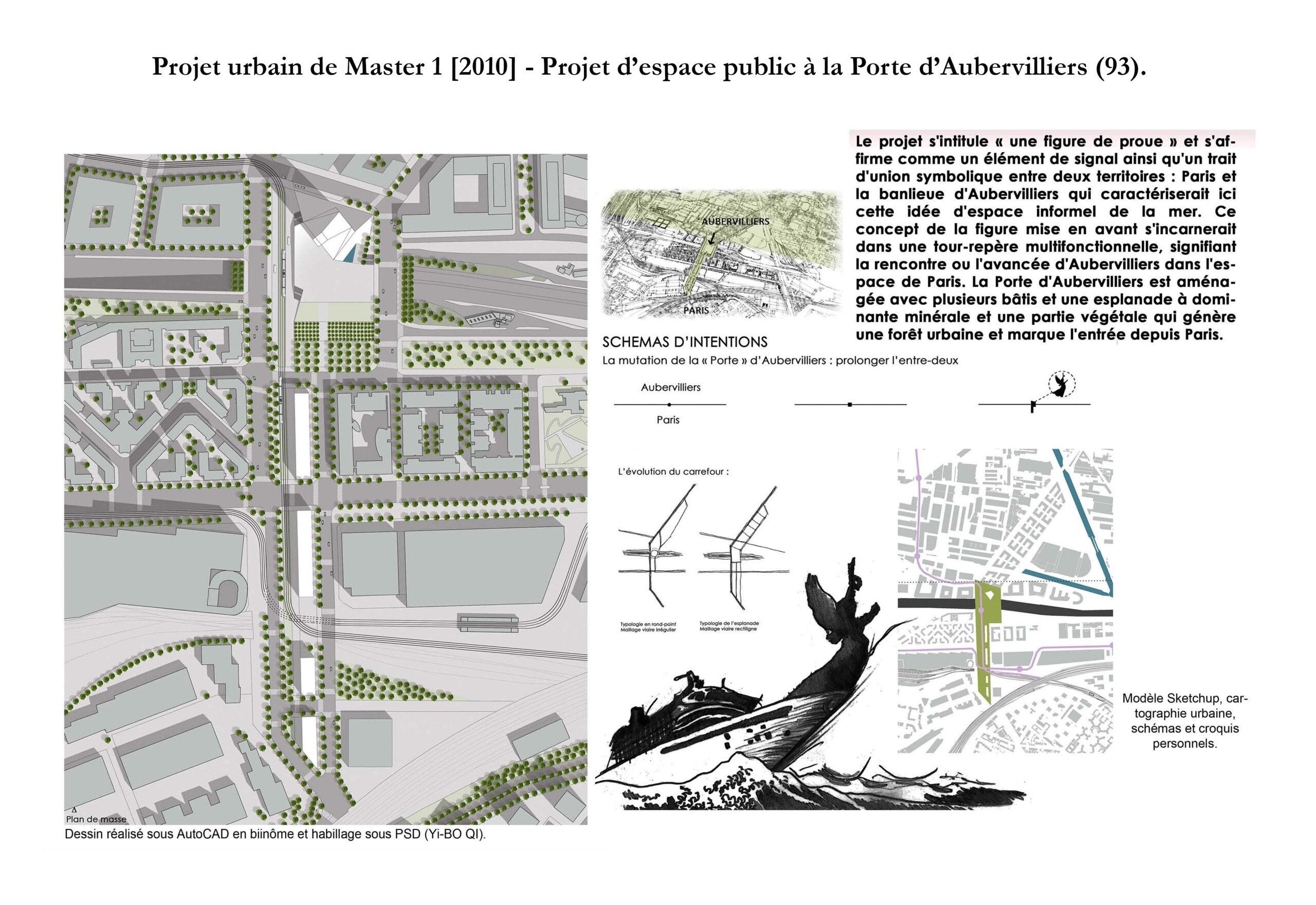
→ Landscape design and environment : The following landscape design’ projects are based on restorative methods (Natural and Regional Parks, “TVB” or Green and Blue Frames, renaturation, ecological corridors, HQE pathways…) combined with biomimetic design, accessibility and the energy and food self-sufficiency of territories. The theoretical contribution of the concept of “paradisiacal urban design” (2023) allows for envisioning space as an “Eden garden” (floral, medicinal, vegetable, aromatic, condimentary and fruits)…
- BTS’ diploma Study: “A Flowering Slope with Stabilizing Vegetation in Sarlat-La-Canéda (24)”
The slope project consists of herbaceous, shrubby and arboreal layers featuring grass species and shrubs that benefit to avian and hymenopteran wildlife (providing shelters and foods). The herbaceous layer helps to limit soil erosion and protects the slope through a stratification of vegetation. The shrubby layer is composed of heliophilic species with 80% local. Finally, the underbrush layer or “filling” includes shade plants species.
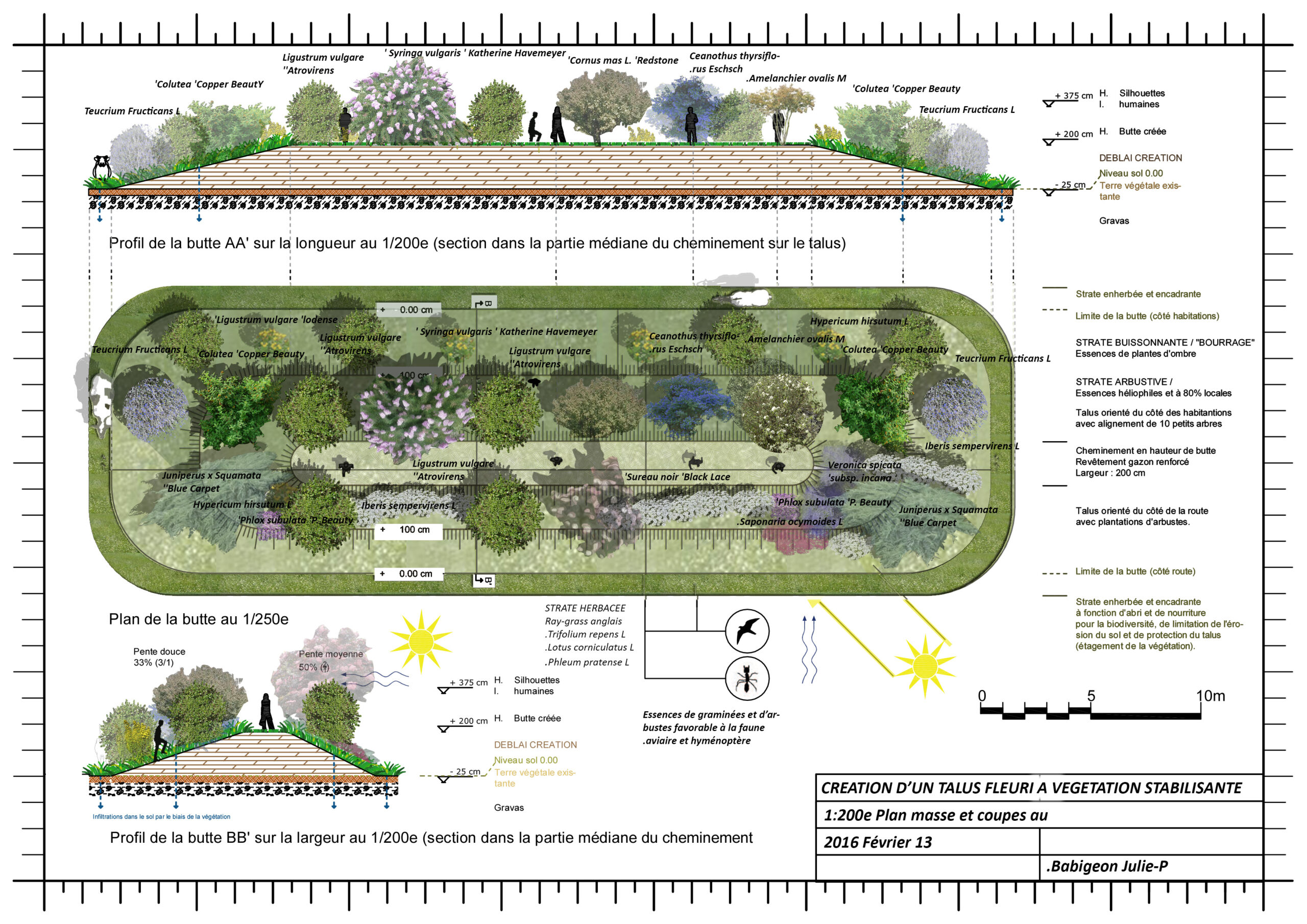
- BTS’ diploma Study: “Cooling off the Floral Park of Bordeaux” (33)
This landscape design’ project proposes the creation of new pathways enhanced by new fountains and plantings within the Floral Park of the Bordeaux’ Metropolis.
- Construction and landscape site – A “paradisiacal garden” of 1 000 m² located in Dordogne (24)
Inspired by the idea of an “Eden garden”, this project is featuring vegetable, medicinal, aromatic, condiment, floral, and fruit garden elements. This planning of a self-sufficient garden is based on the concept of “paradisiacal landscape design” and is located in Nouvelle-Aquitaine (DP, 2022 – current project).
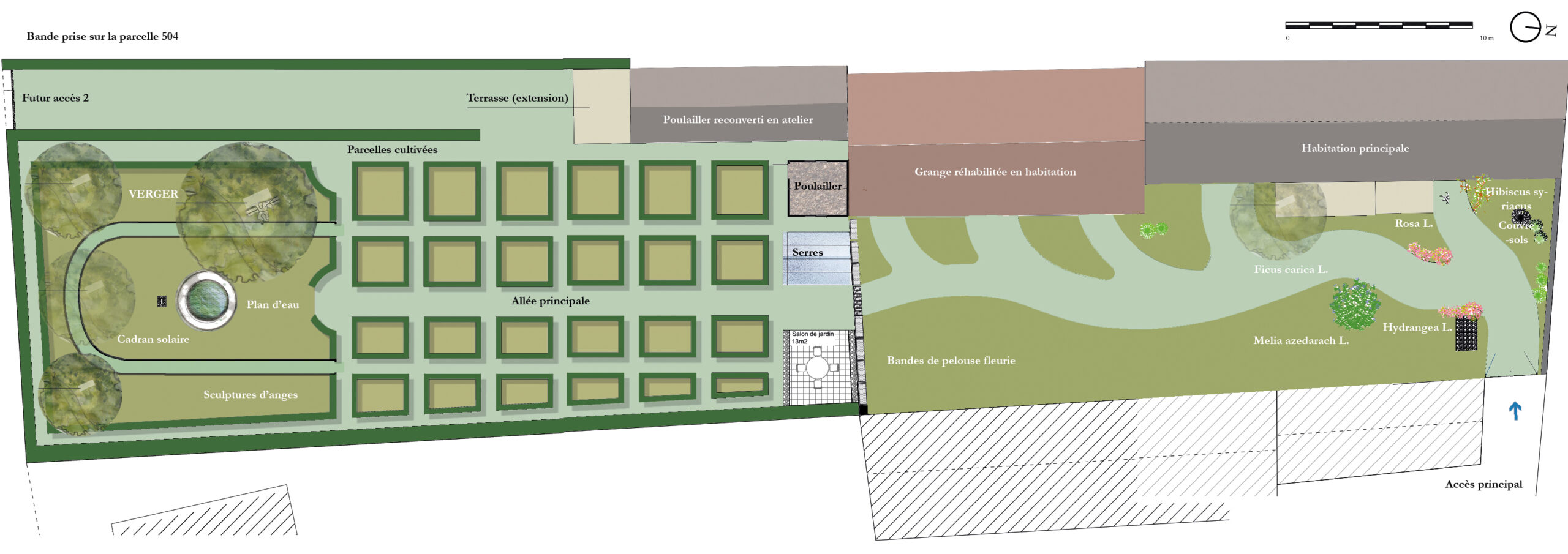
- “An Experimental and Educational Farm in Belle-Île-En-Mer” (Agenda 21 of Belle-Île-en-Mer) (56)
This Bachelor’s degree project was selected in the Agenda 21 of Belle-Île-en-Mer in 2011 and it aims to create an agricultural and touristic hub in Belle-Île-En-Mer.
- “Biodiver(City)” in Athens’ Tritsis Park (International Workshop in Athens).
The project is based on the design of eco-corridors (Green and Blue Frames) and HQE pathways.
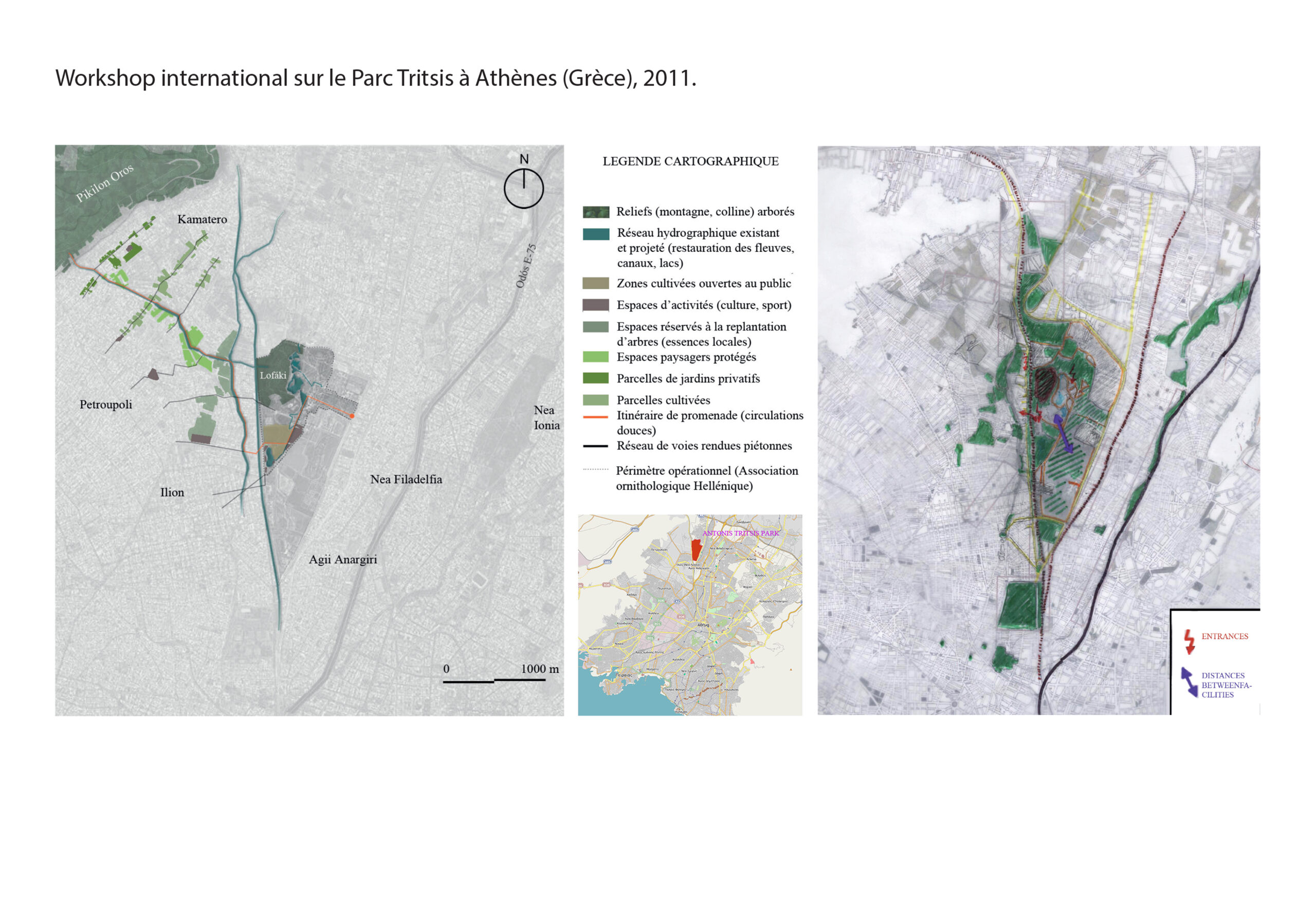
→ My architectural projects are characterized by detailed 3D/2D detailed-measures, a restorative approach, an in-depth knowledge of building history, a design often based on the golden ratio and regulatory lines, as well as an eco-responsible approach (reuse principles, affordable prices …). The created spaces aim to be functional and generously proportioned, with a commitment to technical accessibility for people with reduced mobility. “Eco-Rustic Decorative Style” (2024) is also a concept invented by the author in the eponymous book inspired by French ruralist and American “Boho” styles.
- The renovation of the house “Les Trèfles” and its “eco-rustic” décor
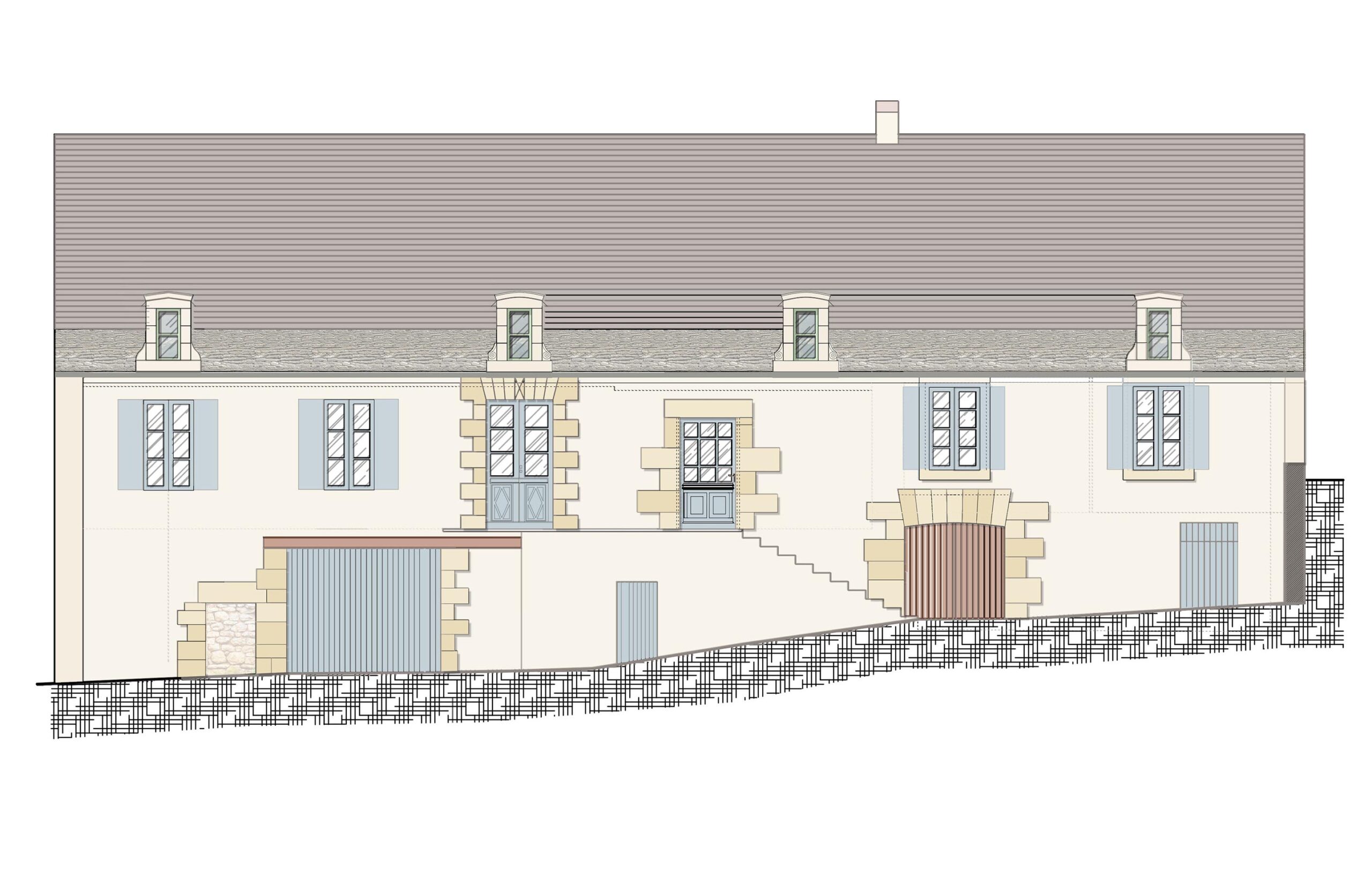
Located in the hamlet of “Larrit” in Saint-Vincent-de-Cosse, this house was built the 18th and 19th centuries and previously lacked a bathroom. The renovation’ project aims to create a bathroom as well as an open living/kitchen zone. The long DCE’ phase allows for reduced pricing, cutting the overall budget by nearly 2/3. The energetic renovation includes a heat pump (previously it was a gas heating), double glazing, new exterior joinery faithful to the historic heritage, and interior insulation of the walls using wood fiber.
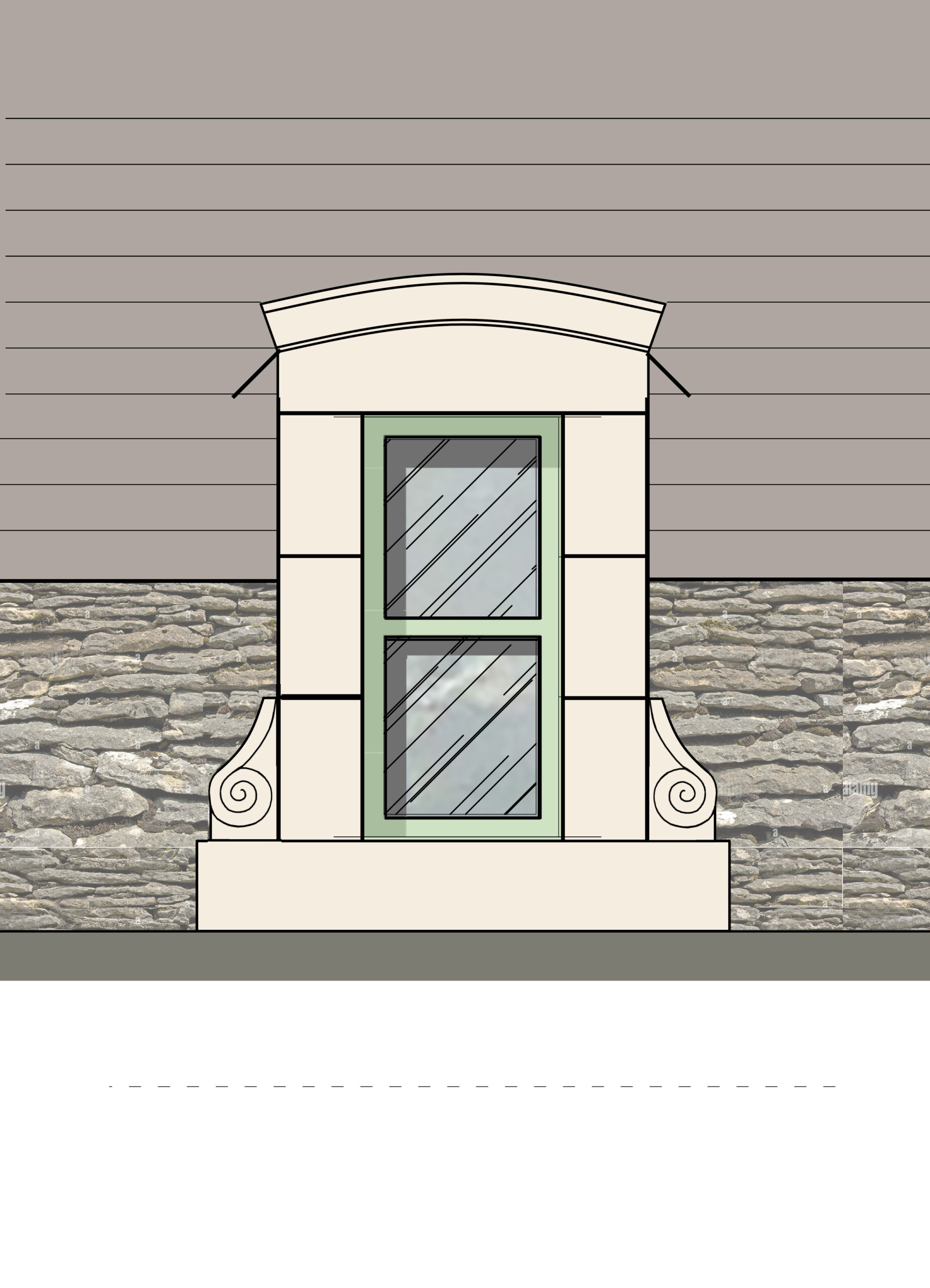
- Renovation of private housing based on the Golden Ratio – 20, Rue d’Obenheim in Molières (24).
This “Permis de COnstruire” proposes an interior layout that aligns with the context of its rural bastide, which was it designed according to the golden ratio.
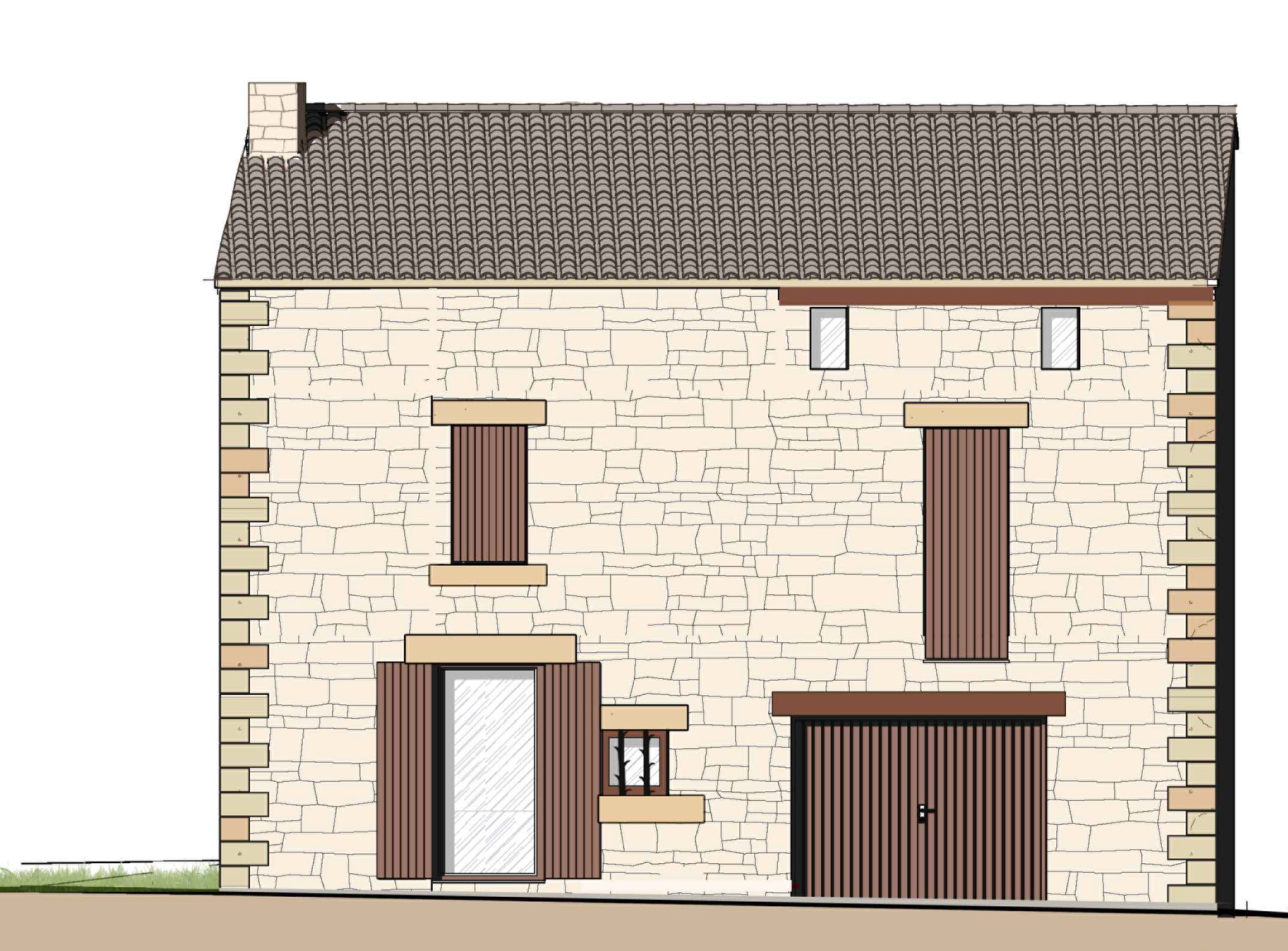
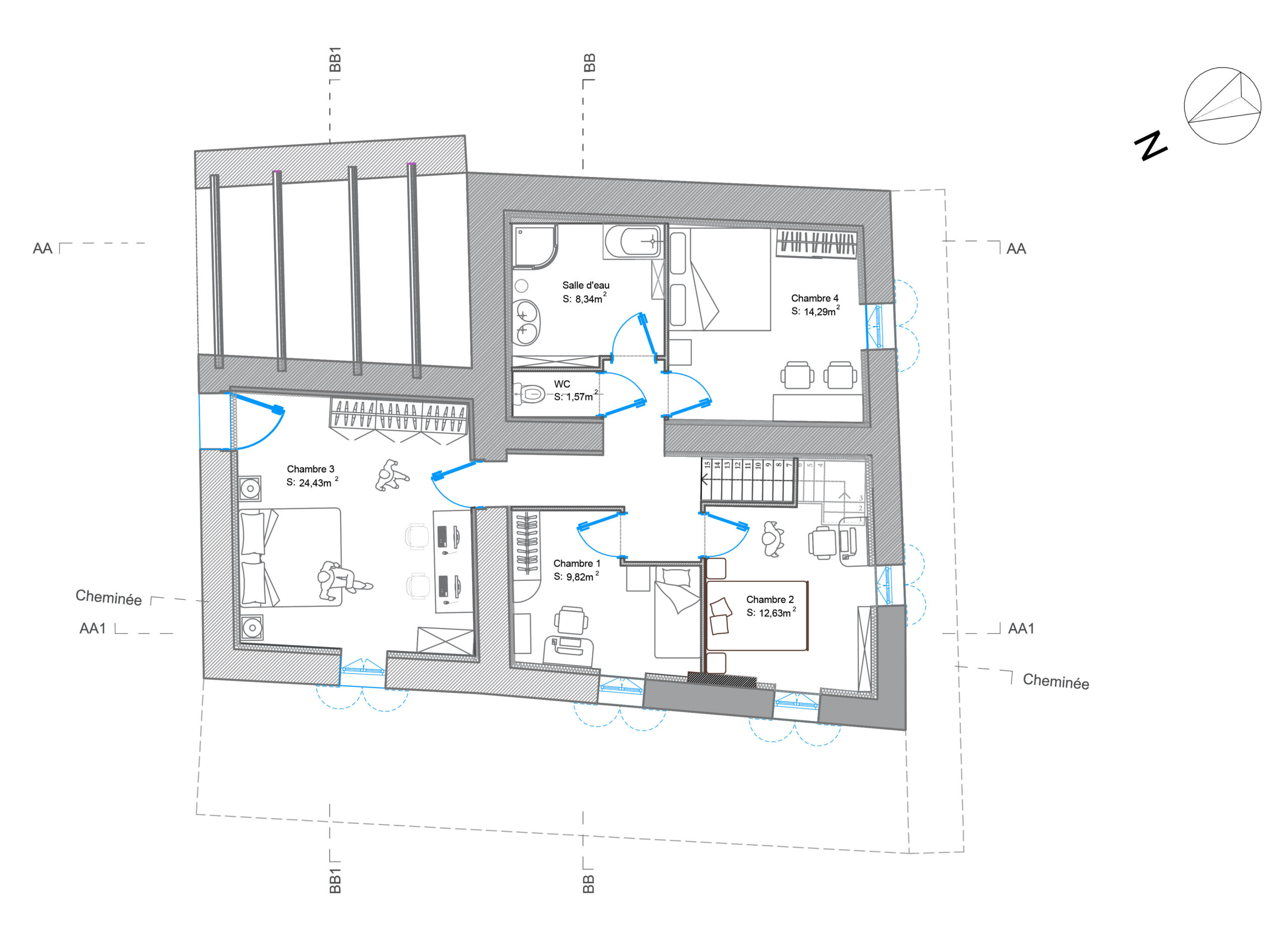
- Rehabilitation of a Ruin Chicken’ Coop into a Studio and Minimalist Housing (24, current project)
This “Permis de Construire” aims to breathe new life into a ruin of an agricultural building, transforming it into a studio complemented by a Minimalist Housing.
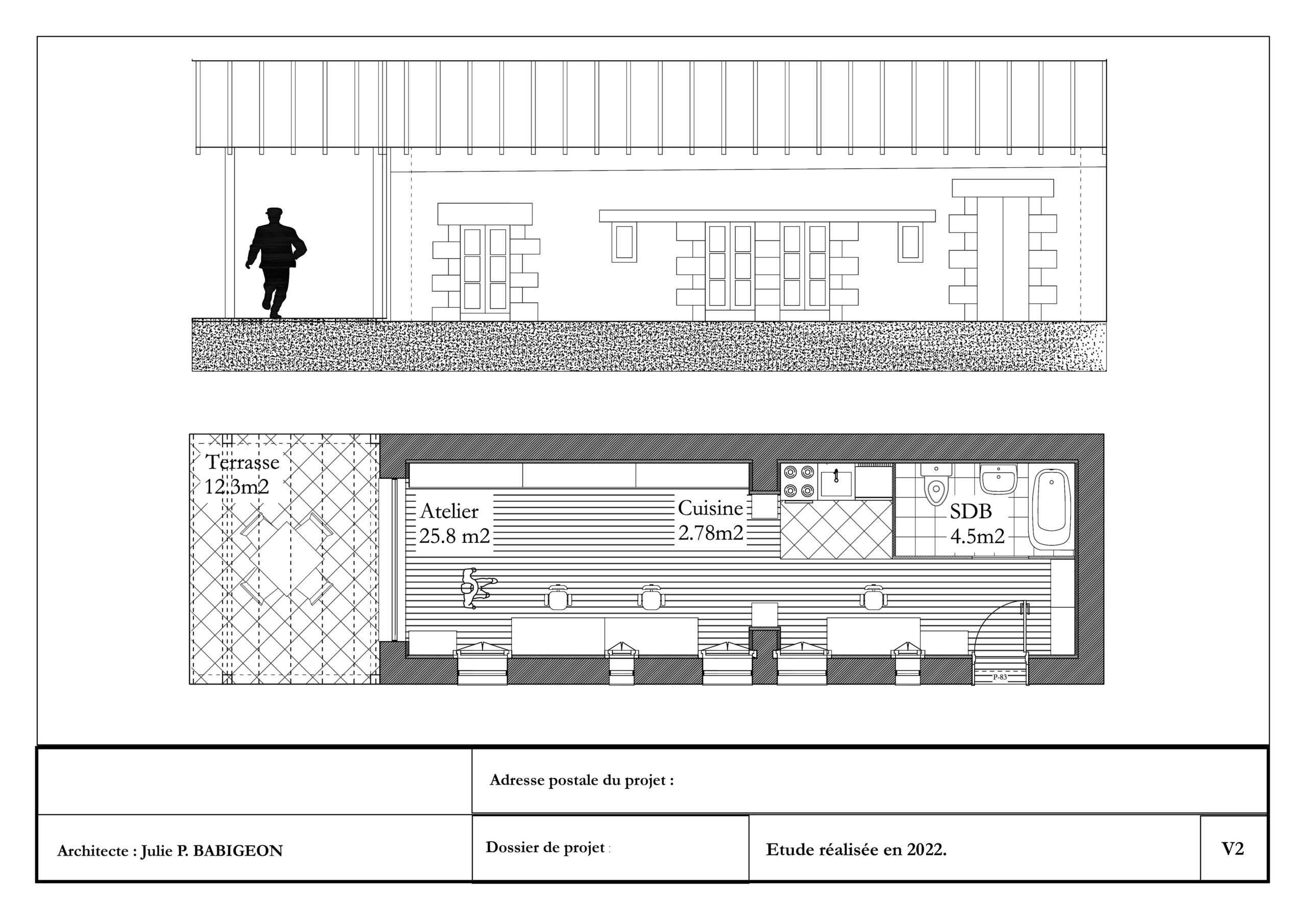
- Bachelor’s Degree architectural Project : A Media Library with “Interior Topographies” located in Pantin (93)
Located in Pantin (93), this project is organized on three levels, with floor plates inspired by the undulating shapes of waves.
- Bachelor’s Degree architectural Project: “Connected Housing’ buildings” in Paris 18th district
This collective housings’ project features generous common spaces that are connected with the adjacent building.
→ The World Environmentalists Federation (that will be launched this autumn 2024)
In tandem with the work of the FabLab, the World Federation of Environmentalists (WEF) is an
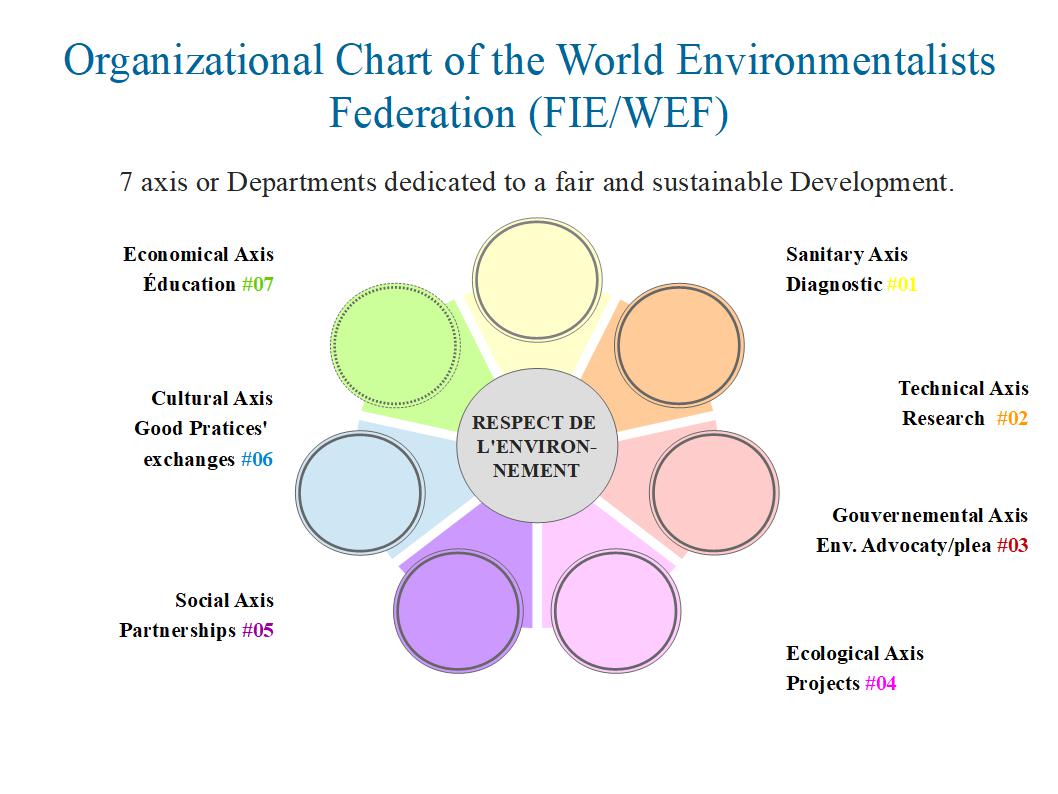
organization that unites environmental associations from around the world. Its goal is to promote environmental preservation based on a global scale, leveraging French examples as foundational models. The federation will gather professionals and experts worldwide and from various fields related to environmental conservation, working especially to commit to the global fight against climate change and the protection of Nature. The FIE-WEF encourages research on these topics and brings together professionals, particularly thé ones from more polluting sectors such as construction, design, transportation or health. The FIE-WEF promotes collaboration among professionals, the sharing of knowledge and experiences, as well as public awareness of environmental issues. Its ultimate goal is to make a significant contribution to the preservation of the planet for future generations.”
The Vision behind FabLab Divine Nature: Creating Sustainable Environments
The Worlds Times: What are your goals?
Julie Babigeon replied, “
- The aims of the FabLab Divine Nature: “Creating Built Environments for Everyone and that Respect Life” (slogan).
The intention is to produce studies and projects that aim reducing environmental impacts. Projected in tandem with the think tank of the future federation FIE-WEF, the FabLab also work on coaching and teaching’ missions to some students with the idea that “The only limit to our realization of tomorrow will be our doubts of today” (Franklin ROOSEVELT). This work encompasses the notions of inclusion, an ethical approach to environmental projects and put the respect for Nature and animals at the core of research and design.
- The objectives of the World Environmentalists Federation (FIE/WEF) : “Restore, Protect, Beautify. Unite for Nature” encapsulates its intentions (slogan).
ELEMENTS OF DIAGNOSTIC
- More than 40% of the planet’s lands are currently degraded (with 90% at risk of degradation of them by 2050) impacting over 3 billion humans according to the United Nations Convention to Combat Desertification (UNCCD) ;
- 60% of the world’s forests are damaged or degraded;
- 420 million hectares of forests have vanished in 30 years, worldwide, and according to datas from the United Nations FAO;
- “In 2023, the total loss of tropical primary forests reached 3.7 million hectares, equivalent to losing nearly 10 football fields every minute”, according to the World Resources Institute ;
- The latest edition of the IUCN’ Red List, published in 2023, assesses 142 577 species; 40 084 of these are classified as threatened (nearly one-quarter, compared to 27 150 identified in the previous study from 2019);
- Among these species, 41% of amphibians, 13% of birds, and 26% of mammals are at risk of extinction globally;
- This is also true for 37% of sharks and rays, 33% of reef-building corals and 34% of conifers trees;
- Populations of vertebrates studied over several decades —fish, birds, mammals, amphibians, and reptiles—have declined by an average of 69% between 1970 and 2018, according to WWF (World Wildlife Fund) ;
- According to the IPBES, the “GIEC of biodiversity”, we are experiencing the “first mass extinction crisis of animals and plants” in France since the disappearance of the dinosaurs;
- “75% of terrestrial ecosystems are significantly altered, over 85% of wetlands have been destroyed, and 66% of marine environments are deteriorated” (IPBES) ;
- Between 2006 and 2015, the country of France had lost more than half a million hectares of agricultural lands and natural spaces (source: ONBiodiversité, 2019) ;
- Europe is the least polluted continent of the world; however, a French citizen “emits an average of 10 tons of CO2 per year, whereas only 2 tons are necessary” according to the Agency for Ecological Transition (ADEME) ;
- Like the 7 poles/départments of the “FabLab Divine Nature”, the FIE-WEF is organized around seven subjects of work (diagnostics, research, advocacy, projects, partnerships, best practice exchanges and educational actions/events) ;
- Establish France as an even stronger global reference in the application of environmental laws and innovative and ecological projects;
- Advance research to realize the ecological transition across all sectors, particularly the most polluting sectors of the society;
- Contribute to promoting a healthier global environment leading to a fairer and more responsible society;
- Unite the efforts of the proponents of the World Environment Organization (WEO/OME/OMPE), a French initiative that emerged in the 1990s and has remained an idea until now;
- Create a powerful global professional organization to support this WEO ;
- Combat environmental crimes and ecocides while recognizing their indirect economic costs at the international scale. According to the General Secretariat for European Affairs (SGEA) “each year, we face losses estimated between 80 and 230 billion euros” at least in Europe.”
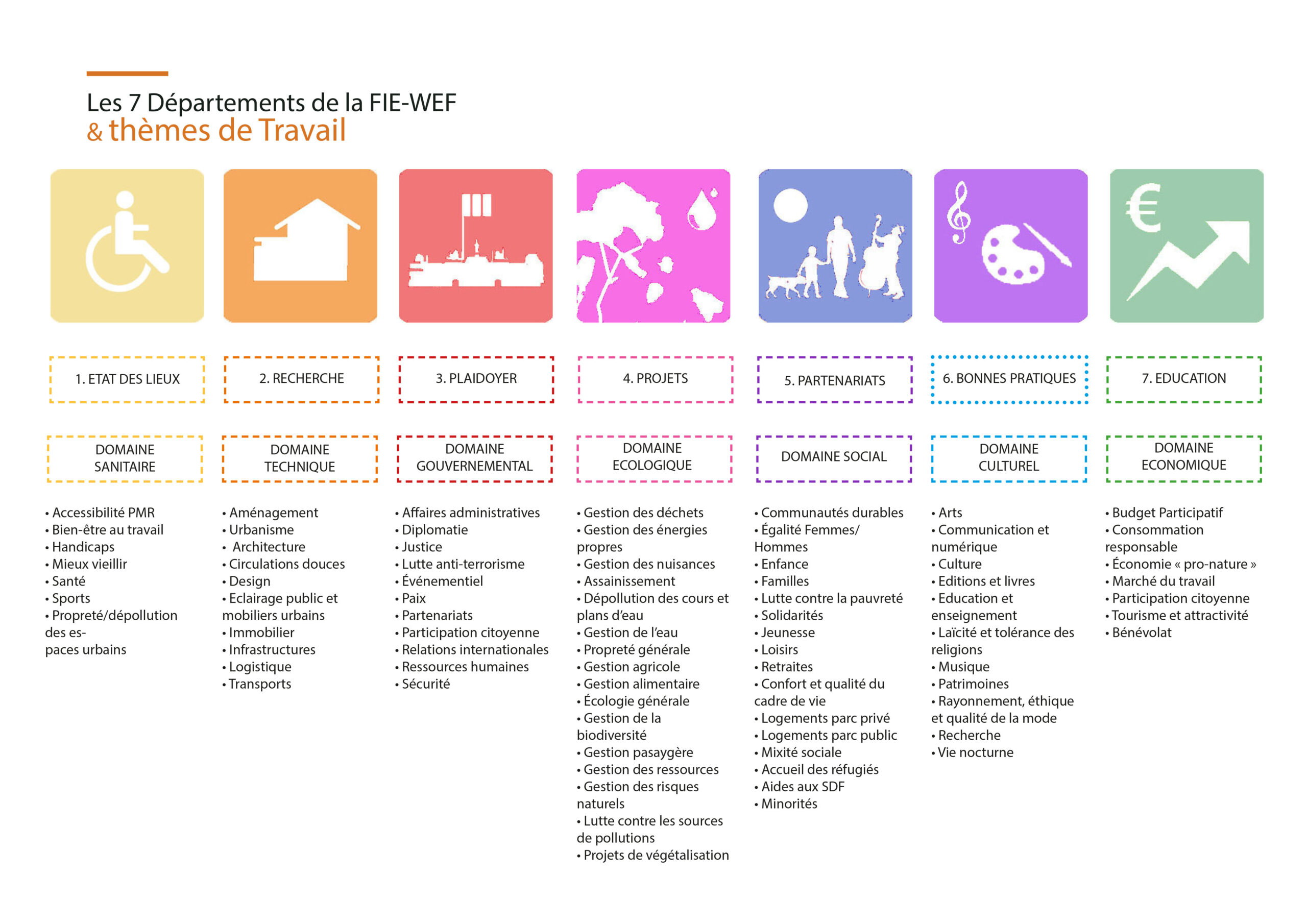
Julie Babigeon’s Strength: Courage in the Face of Adversity
The Worlds Times: What do you feel is the biggest strength of “JULIEPAULINEBABIGEON” right now?
Julie Babigeon replied, “The courage to propose progressive ideas in a context that is not conducive to such change. This is particularly true in terms of environmental protection but also in concernant a real inclusion and the health issues for architects at work.”
From Rural Beginnings to Urban Advocate: Julie Babigeon’s Path
The Worlds Times: What was the path you took to get to where you are today?
Julie Babigeon replied, “I was born near from the doors of Paris, in Saint-Cloud city (Hauts-de-Seine) but I spent my childhood in a small village located in Dordogne, about 450 kilometers from my birthplace. This background later made it challenging for me to integrate such prestigious schools in Paris, but it also allowed me to develop a deep sensitivity to environmental and agricultural issues. Today, through persistent efforts, I take a strong pride in publicly advocating for these important topics such as rurality stakes, the promotion of farmers and their sector, as well as the preservation of agricultural land within the Parisian Region. Furthermore, I strive to contribute my vision on the broader challenges of landscape preservation and design.”
The Inspiration behind JULIEPAULINEBABIGEON
The Worlds Times: Why did you start “JULIEPAULINEBABIGEON”?
Julie Babigeon replied, “I publicly engage projects on societal issues related to architecture, that I believe are crucial to advocate for. One such issue is, for example, promoting the sectors of renovation, rehabilitation and heritage restoration in place of new constructions. I strive to influence the students as a mentor architect, as well as the National Order of Architects and the National Schools of Architecture (ENSA) on these issues. I take pleasure in highlighting the artisanal practices of architecture, the copyright of construction’ artisans and fostering a more respectful, equitable and inclusive vision for young and women architects in France. I seek to promote research reflections on eco-construction or existing buildings that have a lesser impact on the environment. I advocate for raising awareness about environmental issues and decent housing for all within this sector. Personally, I also aim to help my mother, who has got limited financial budget, in renovating her home, a house that never included a bathroom during my childhood.”
Overcoming Challenges: Resilience in Leadership
The Worlds Times: What have been the biggest challenges you’ve had to overcome during the journey of your leadership?
Julie Babigeon replied, “Without a doubt, the greatest challenges I have faced include the lack of support from my loved ones during my studies. My only very strong support came from my dear and estimated mother. And I also suffered from the ingratitude and jealousy of certain employers I have served and assisted, yet who refuse to acknowledge or publicly recognize my contributions. I have encountered numerous acts of pettiness from professionals who sought to divert me from my professional dreams and my paths to prosperity.”
The Worlds Times: Give us one word that describes you the best.
Julie Babigeon replied, “COURAGE.”
A Vision for the Future
The Worlds Times: What do you value the most about “JULIEPAULINEBABIGEON” vision?
Julie Babigeon replied, “I value and strive to prioritize a long-term vision with the intention of promoting an inclusive approach, environmental ethics and affordable prices. For example, I adjust my professional coaching’ invoices according to the financial budget of my students. I have also dedicated many years as a volunteer in a lot of environmental, political of humanitarian associations.
Delivering Inclusive and Environmentally Conscious Solutions
The Worlds Times: What are the key values which helped you to overcome the challenges in your path? Tell us something about your memorable incident in your leadership?
Julie Babigeon replied, “As noted in the previous question, I have faced numerous challenges from the ingratitude, jealousy and even hostility of certain employers and colleagues. I believe that this period forced me to question many aspects of my career but this relentless struggle has forged my courage and, I believe, cultivated an even greater sense of merit.”
The Worlds Times: How do you see the “JULIEPAULINEBABIGEON” changing in two years, and how do you see yourself creating that change?
Julie Babigeon replied, “My intention is to develop the professional network of my FabLab Divine Nature as well as the environmental Federation (FIE-WEF). In particular, I aim to organize online events that bring together many individuals to raise awareness about the issues addressed in projects, engage some other debates and exchange ideas. Perhaps, recruit a partner and some future interns in the future.”
Benefits of Collaborating with JULIEPAULINEBABIGEON
The Worlds Times: What benefits are people getting from “JULIEPAULINEBABIGEON” in this competitive world?
Julie Babigeon replied, “I believe that the clients who seek after my services or draw inspiration from my initiatives can benefit from ideas that are often innovative, rooted in strong environmental ethic, also characterized by inclusive engagement, meticulous attention to details and respectful exchanges. “
The Worlds Times: How many people are getting benefits from “JULIEPAULINEBABIGEON”?
Julie Babigeon replied, “As my business is in its nascent stages, my current projects involve about ten collaborators or clients. Yet, I am fortunate to have cultivated a professional network of more than 11 600 followers on LinkedIn’ website, which serves as a vibrant platform for sharing ideas and fostering connections. This extensive network allows my work to resonate beyond the immediate scope of my contracts, indirectly influencing a significantly larger audience. The impact of my initiatives transcends traditional metrics, highlighting the potential for broader engagement and awareness of the issues I appreciate to engage on.”
Advice to readers
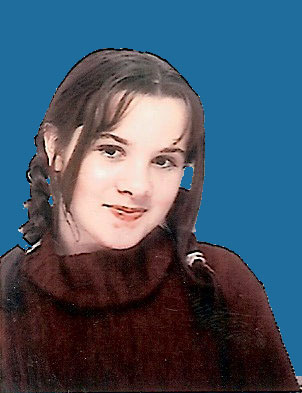
The Worlds Times: Would you like to say anything else to our viewers?
Julie Babigeon replied, “I would like to conclude this interview with one word to tell to the viewers of Worlds Times media, especially to the younger generations. It would be not to listen to those who belittle your projects and ambitions but to never give up on your dreams.”
Connect Julie Babigeon on Linkedin
Visit Website: https://juliepaulinebabigeon.com/
Also Read:
How Lara Kloosterboer Westphalen Redefines Personalised Lifestyle Management
Rory Lang: How Asia Pacific Legal Navigates Complex Legal Mandates Across Developed and Emerging Markets
Powering Progress In The Energy Sector With Energetica: Zaki Nashif




